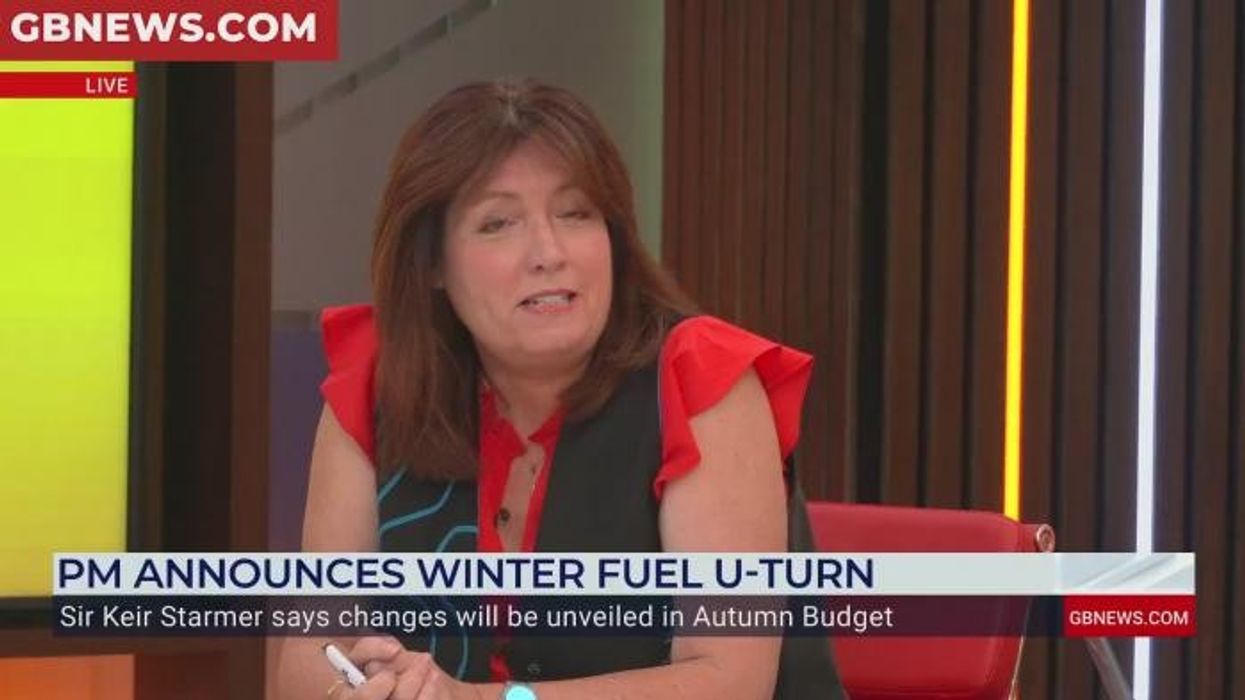Angela Rayner is right: we must build more council homes – but this time, hard-working Britons should get priority
OPINION: Social housing has played an important part in Britain’s history, and it will continue to do so thanks to our broken property market
Don't Miss
Most Read
Trending on GB News
Housing Secretary and Deputy Prime Minister Angela Rayner has barely been out of the news this week. On Wednesday, newspapers published the text of a leaked memo penned by Rayner to the Chancellor of the Exchequer, Rachel Reeves, offering controversial suggestions as to how Reeves could raise taxes for the middle classes and cut spending in the Government’s upcoming spending review.
On Friday, Rayner hit the headlines again, this time as it was revealed she is lobbying the Treasury to spare her Department from anticipated spending cuts, arguing that the Government must invest £2billion in building more social and affordable housing. Rayner, who herself was brought up in a Council house, said in a speech to the Social Housing Annual Conference last November:
“When I was growing up, we didn’t have a lot, but we had a safe and secure council home. And later, when I needed a home to raise my son, I was given my own council home. I haven’t got to where I am today in spite of coming from a council house, but because of it.”
Social housing has certainly played an important part in Britain’s history. After the Second World War, 1.2million council houses were constructed in just five years. Another three million were completed over the next three decades.
After the devastation of the 1940s, the programme was seen as a great success as millions of people across Britain were able to rent decent homes at affordable prices while working hard to provide for themselves and their families. But after more than two million social houses were sold off following Margaret Thatcher’s ‘Right to Buy’ revolution, construction of new council houses stalled. Last year, despite an unprecedented housing shortage in Britain, fewer than 10,000 social houses were built.
With the cost of buying or privately renting houses continuing to soar, 1.3 million households—likely equating to well over two million people—are now on the social housing waiting list.
So, is the Deputy Prime Minister right? Should the Government embark on a new wave of social house building even in the context of such serious economic constraints?
A new report published by the Pimlico Journal this week claims that the problem is not that the UK doesn’t have enough social housing, but rather that council homes are no longer allocated fairly. Analysis of 2021 census data shows that, in London, 49 per cent of social houses are rented to individuals not born in the UK, and an astonishing 250,000 properties are occupied by tenants who are not in work.
The report highlights the extraordinary cost to the taxpayer of this now widespread practice of distributing social housing “on the basis of a political and bureaucratic understanding of ‘need’ and entitlement”. The study argues that, while council housing is not generally viewed as a cash benefit akin to Universal Credit or disability living allowance, renting a social home is nevertheless equivalent to receiving a huge subsidy from the taxpayer. This is especially true in London, where real estate prices are some of the most expensive in the world.

Angela Rayner is right: we must build more council homes – but hardworking Britons are missing out
|Getty Images
Take a house in Kensington & Chelsea, for example, one of London’s most exclusive boroughs. The Pimlico Journal states that the average cost of privately renting a four-bedroom property in Kensington is an eye-watering £5,186 a month. Yet the rent charged for one of the area’s four-bedroom council houses is just £800, an effective discount of £4384 a month. In other words, the Kensington and Chelsea local authority budget—and therefore the taxpayer—would be £155 million a year better off if its 6440 council homes were rented on the open market.
If this calculation is extrapolated to every local authority in England, the Pimlico Journal estimates an implied taxpayer-funded rental subsidy of £19.1billion a year to council housing tenants. And if all social homes were sold off altogether, the report claims that the Treasury could expect to bank around £435billion—that’s enough to pay off 16 per cent of the national debt or fund the nation’s entire policing budget for 23 years.
Given the enormous opportunity cost to the public finances of renting out council homes at such a discounted rate, it’s especially important that such a significant benefit is offered only to those who genuinely need and deserve it. And, since the expense of building, maintaining and administering council houses falls squarely on the British taxpayer, there’s a strong argument that social housing should be reserved for working British families. We already accept that most immigrants have to pay a surcharge before they can use the NHS. Many people, therefore, assume that only those who have settled in Britain and gained citizenship are eligible for social housing.
This is certainly supposed to be the case. Immigrants to Britain come under visas stipulating ‘No Recourse to Public Funds’ (NRPF), which means that they cannot access welfare benefits and must support themselves financially or leave the country. But as the Prosperity Institute’s Guy Dampier told Saturday Morning Live, these requirements can be waived by councils in some circumstances. Inevitably, according to the report, “YouTube is full of videos giving advice to immigrants seeking to overcome the low bar of NRPF.”
On a proportional basis, white British socially rented households gain the smallest implied subsidy of any group. Not only is this situation deeply unfair, but the preferential distribution of social housing to those not born in Britain acts as yet another pull factor for immigrants. When GB News’ Patrick Christys visited a migrant camp in Calais earlier this month, one young man told him that he wanted to come to the UK because he had been told that Britons would buy him a house. In recent years, the rate of immigration has vastly outpaced our ability to build new homes. The pressure on our already strained housing supply—both private and social—has become unsustainable.
So what’s the answer? Well, the first step must be to tighten up the conditions of tenancy for social housing, prioritising British families who are in work. And we must end the absurd scenario where those who have access to other properties are allowed to retain social tenancies. GB News recently reported on the absurd case of the First Lady of Sierra Leone, who reportedly rents a council flat in South London despite owning an extensive luxury property portfolio in Africa.
But the Pimlico Journal recommends far more radical action, suggesting that Britain’s social housing stock should be sold off, raising funds for the taxpayer and rationalising the housing market. Yet, without other significant reforms, the inevitable result of such a large-scale sell-off would be that millions more people become unable to afford housing without taxpayer-funded support. The cost of the implied council house ‘subsidy’ would fall, but the housing benefit bill would soar. And in all likelihood, this housing benefit would represent a direct cash transfer from the state to the new private owners of previously social-owned homes: private landlords, pension funds and foreign investors.
Selling off council houses is not the answer, but neither is it the case that rapidly increasing the supply of private homes will make housing costs more affordable for ordinary people. It is well known that the UK needs more houses, but constrained supply is not the only reason for soaring property prices. Other Western countries that have more housing per capita and less immigration than Britain have still experienced record house price growth over the last 30 years. This suggests that ultra-low interest rates, central bank policies and asset speculation are just as significant as supply constraints in driving up property values. Selling off social housing stock or building more houses for the open market will therefore have a limited impact on driving down prices.
For many people on low pay, such as those working in warehouses, cleaning commercial property, classroom assistants, there is no realistic prospect of being able to afford to own or privately rent a house near their place of work without subsidy. These are the hard-working people who would benefit from a council house if enough were available. They are also the people who might be able to afford to have the children that they want—and that the nation needs—if they had access to a high-quality, affordable social home.
Angela Rayner is right; we should build more social housing. Thanks to our broken property market, low-rent council homes are going to play an important role in Britain’s housing landscape for some time to come. But this time we must ensure that all social housing stock—both new and existing homes—is reserved for hard-working British families.
More From GB News











